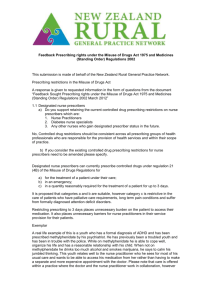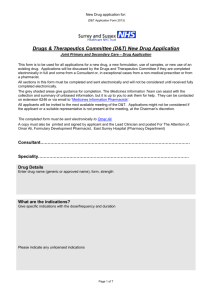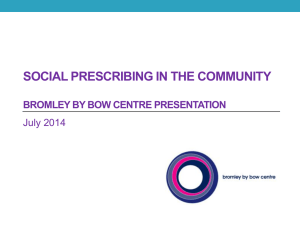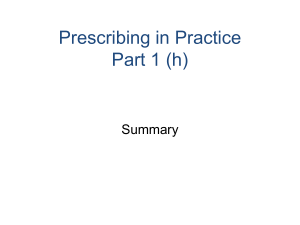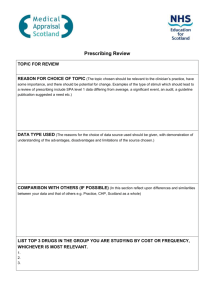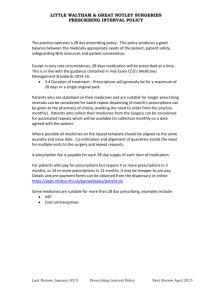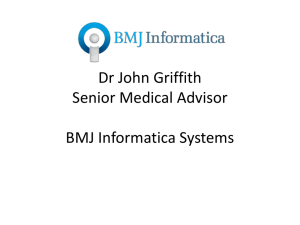Summary of submissions on proposed changes to nurse
advertisement
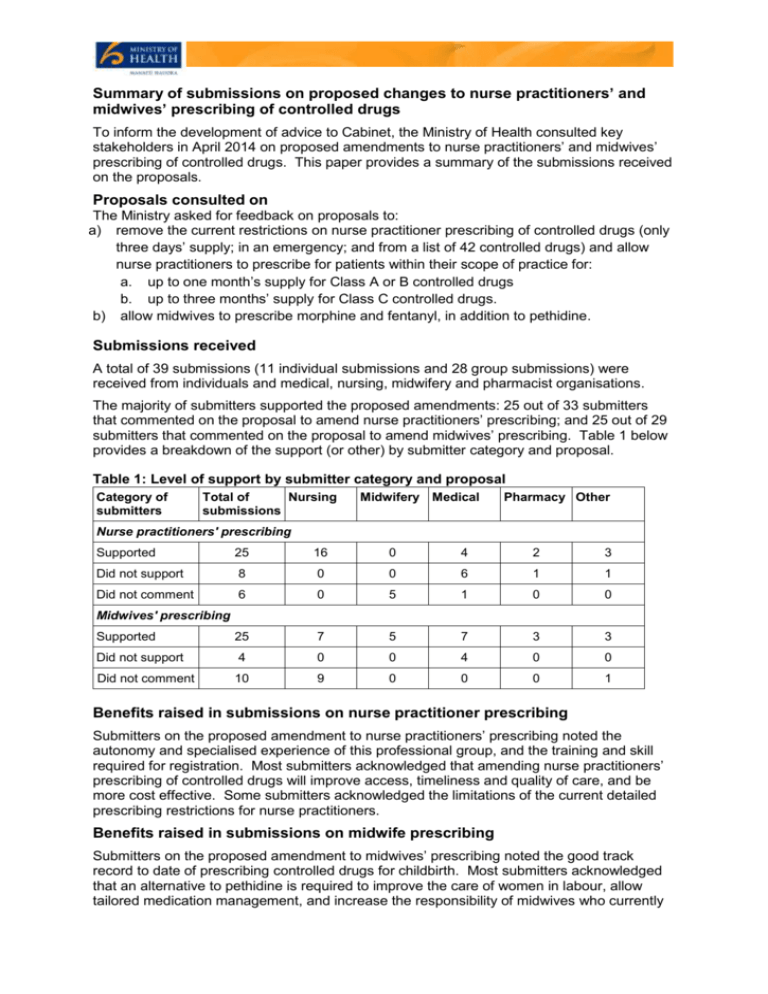
Summary of submissions on proposed changes to nurse practitioners’ and midwives’ prescribing of controlled drugs To inform the development of advice to Cabinet, the Ministry of Health consulted key stakeholders in April 2014 on proposed amendments to nurse practitioners’ and midwives’ prescribing of controlled drugs. This paper provides a summary of the submissions received on the proposals. Proposals consulted on The Ministry asked for feedback on proposals to: a) remove the current restrictions on nurse practitioner prescribing of controlled drugs (only three days’ supply; in an emergency; and from a list of 42 controlled drugs) and allow nurse practitioners to prescribe for patients within their scope of practice for: a. up to one month’s supply for Class A or B controlled drugs b. up to three months’ supply for Class C controlled drugs. b) allow midwives to prescribe morphine and fentanyl, in addition to pethidine. Submissions received A total of 39 submissions (11 individual submissions and 28 group submissions) were received from individuals and medical, nursing, midwifery and pharmacist organisations. The majority of submitters supported the proposed amendments: 25 out of 33 submitters that commented on the proposal to amend nurse practitioners’ prescribing; and 25 out of 29 submitters that commented on the proposal to amend midwives’ prescribing. Table 1 below provides a breakdown of the support (or other) by submitter category and proposal. Table 1: Level of support by submitter category and proposal Category of submitters Total of Nursing submissions Midwifery Medical Pharmacy Other Nurse practitioners' prescribing Supported 25 16 0 4 2 3 Did not support 8 0 0 6 1 1 Did not comment 6 0 5 1 0 0 Supported 25 7 5 7 3 3 Did not support 4 0 0 4 0 0 Did not comment 10 9 0 0 0 1 Midwives' prescribing Benefits raised in submissions on nurse practitioner prescribing Submitters on the proposed amendment to nurse practitioners’ prescribing noted the autonomy and specialised experience of this professional group, and the training and skill required for registration. Most submitters acknowledged that amending nurse practitioners’ prescribing of controlled drugs will improve access, timeliness and quality of care, and be more cost effective. Some submitters acknowledged the limitations of the current detailed prescribing restrictions for nurse practitioners. Benefits raised in submissions on midwife prescribing Submitters on the proposed amendment to midwives’ prescribing noted the good track record to date of prescribing controlled drugs for childbirth. Most submitters acknowledged that an alternative to pethidine is required to improve the care of women in labour, allow tailored medication management, and increase the responsibility of midwives who currently administer controlled drugs they do not prescribe (eg, a medical practitioner prescribes a controlled drug other than pethidine, and a midwife then administers it to the patient unsupervised). Feedback from some midwifery and anaesthetist organisations offered differing levels of support for the three drugs proposed. These differences reflected the varying effects and risks of the drugs. Views were reconciled through a meeting convened by Ministry officials and these groups now all support the original proposal allowing midwives to prescribe morphine and fentanyl, in addition to pethidine. Risks raised in submissions The key risks raised by submitters of both proposals centred on the potential increase of diversion, abuse and addiction of controlled drugs; and the need for appropriate education and training to ensure controlled drugs are prescribed safely. Some submitters assumed that the amendments would increase the total number of health professionals who can prescribe controlled drugs. The amendments will not do this as both nurse practitioners and midwives already have the ability to prescribe controlled drugs. Ministry response to risks raised in submissions The Ministry considers the risks about nurse practitioners’ and midwives’ prescribing of controlled drugs raised by submitters are adequately mitigated, as they are for other health practitioners. Mitigations include the training, registration, and other statutory requirements of both nurse practitioners and midwives; as well as controls around, and monitoring of controlled drug prescribing. The Nursing Council requires pharmacology and pharmacokinetics education and training as part of nurse practitioner registration. This includes recognising situations of drug misuse and taking appropriate action. Pharmacology and pharmacokinetics education is also part of the preregistration standards for midwifery. Registered midwives will be required to complete additional education in the use of morphine and fentanyl before being authorised by the Midwifery Council to prescribe these drugs. The New Zealand electronic Prescription System (NZePS) aims to improve communication between prescribers and community pharmacies, and is being rolled out around New Zealand. NZePS offers a number of benefits for pharmacists, prescribers and patients. It is envisaged that the NZePS will be safer for patients as it will ensure that controlled drugs will automatically be included in the prescribing history on prescribers’ patient management systems, providing more complete clinical governance.
